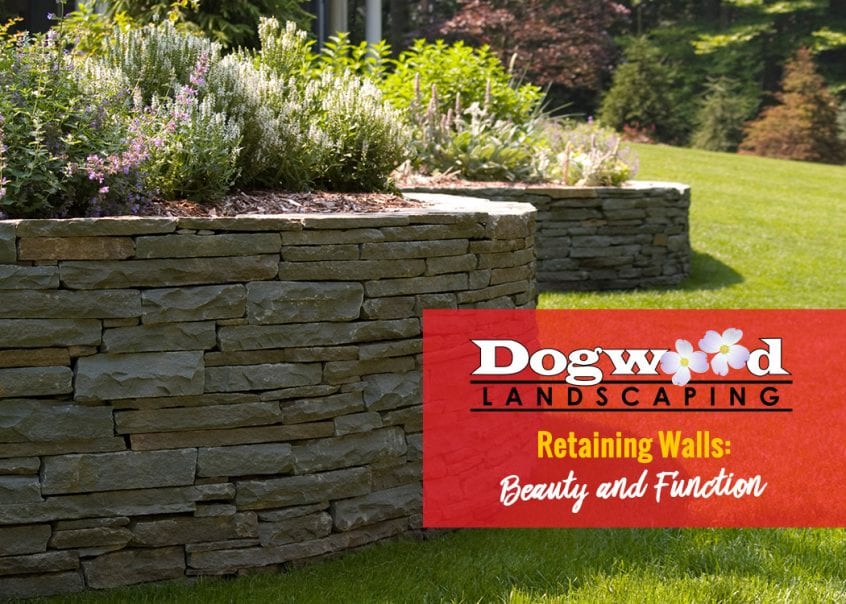Previously, we talked about the importance of hardscaping and how it can help transform your yard from a simple lawn with shrubs and trees into a beautiful, fully designed, landscape that will be the envy of the neighborhood. Features like patios, walkways, and driveways often draw the most attention, but there is one feature of a yard that combines function and form in a unique way. We’re talking, of course, about the retaining wall. Retaining walls are important protective features of a yard that also provides a fresh look to your landscape.
What are Retaining Walls Used for?
Nature can be uneven and unpredictable sometimes. You might want a flat surface where a hill is and other times you might want a hill where a flat surface is. You can take control of your yard with retaining walls to create the perfect landscape for your preference. Using retaining walls, you can turn a hill into a multi-level area, level out your yard, or create a raised or sunken-in patio or garden. The main purpose of a retaining wall is to hold soil in place to prevent erosion and flooding but it can also act primarily as a beautiful part of the design of a yard.
Low Maintenance and Durable
Retaining walls are extremely low maintenance. Once installed, you really don’t have to do anything else to keep it up, unless you use a dry stack wall and plan on moving the stones around occasionally. The level of maintenance you desire is up to you, but it’s safe to say you can leave your wall alone once it’s built to your liking. Retaining walls made of natural products are meant to stand up to harsh weather conditions, so they rarely, if ever, require repair. Walls made of natural materials are often local to the area, so the materials are accustomed to weather conditions. You won’t have to spend time or money replacing or repairing your wall, making it a great investment.
Properly Draining a Retaining Wall
One of the worst things you can do for a retaining wall is allow groundwater to build up behind it. Mortared brick and stone walls should have weep holes along the base to allow water to pass through. Loose stone walls already have openings between the stones and therefore do not need separate holes for drainage.
It might also be a good idea to have a drain line installed behind the retaining wall, especially with the amount our area gets in the spring. This drain line would consist of a gravel base with a pipe that carries water away. This drainage method would prevent water from building up in the soil and causing a retaining wall to bulge or collapse. Dogwood landscape design experts can determine what type of drainage you will need for your retaining wall.
If you’re interested in learning more about retaining walls and how they might be a potential solution for your yard, please contact Dogwood HERE or by calling us at 678-368-7000. And remember, Your Backyard Has Dreams Too!

